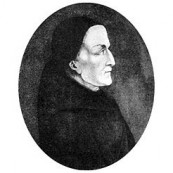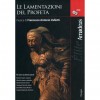Composers
Francesco Antonio Vallotti (11 June 1697 – 10 January 1780) was an Italian composer, music theorist, and organist.
He was born in Vercelli. He studied with G. A. Bissone at the church of St. Eusebius, and joined the Franciscan order in 1716. He was ordained as a priest in 1720. In 1722 he became an organist at St. Antonio in Padua, and would eventually become maestro there in 1730, succeeding maestro Calegari, and would hold that position for the next fifty years. Here he would meet and work with another theorist and composer named Giuseppe Tartini. Vallotti died in Padua on 10 January 1780.
Vallotti spent a great deal of thought on the theory of harmony and counterpoint. His theoretical endeavours would culminate in 1779 with the publishing of his 167-page, four volume work, Della scienza teorica e pratica della moderna musica (On the scientific theory and practice of modern music), just before the end of his life.
One of his most frequently cited contributions to theory was his development of a system of Well temperament, known today as Vallotti temperament, which was one of many systems of instrumental tuning for the accommodation of composition in every key.
Biography
Francesco Antonio Vallotti (11 June 1697 – 10 January 1780) was an Italian composer, music theorist, and organist.
He was born in Vercelli. He studied with G. A. Bissone at the church of St. Eusebius, and joined the Franciscan order in 1716. He was ordained as a priest in 1720. In 1722 he became an organist at St. Antonio in Padua, and would eventually become maestro there in 1730, succeeding maestro Calegari, and would hold that position for the next fifty years. Here he would meet and work with another theorist and composer named Giuseppe Tartini. Vallotti died in Padua on 10 January 1780.
Vallotti spent a great deal of thought on the theory of harmony and counterpoint. His theoretical endeavours would culminate in 1779 with the publishing of his 167-page, four volume work, Della scienza teorica e pratica della moderna musica (On the scientific theory and practice of modern music), just before the end of his life.
One of his most frequently cited contributions to theory was his development of a system of Well temperament, known today as Vallotti temperament, which was one of many systems of instrumental tuning for the accommodation of composition in every key.



